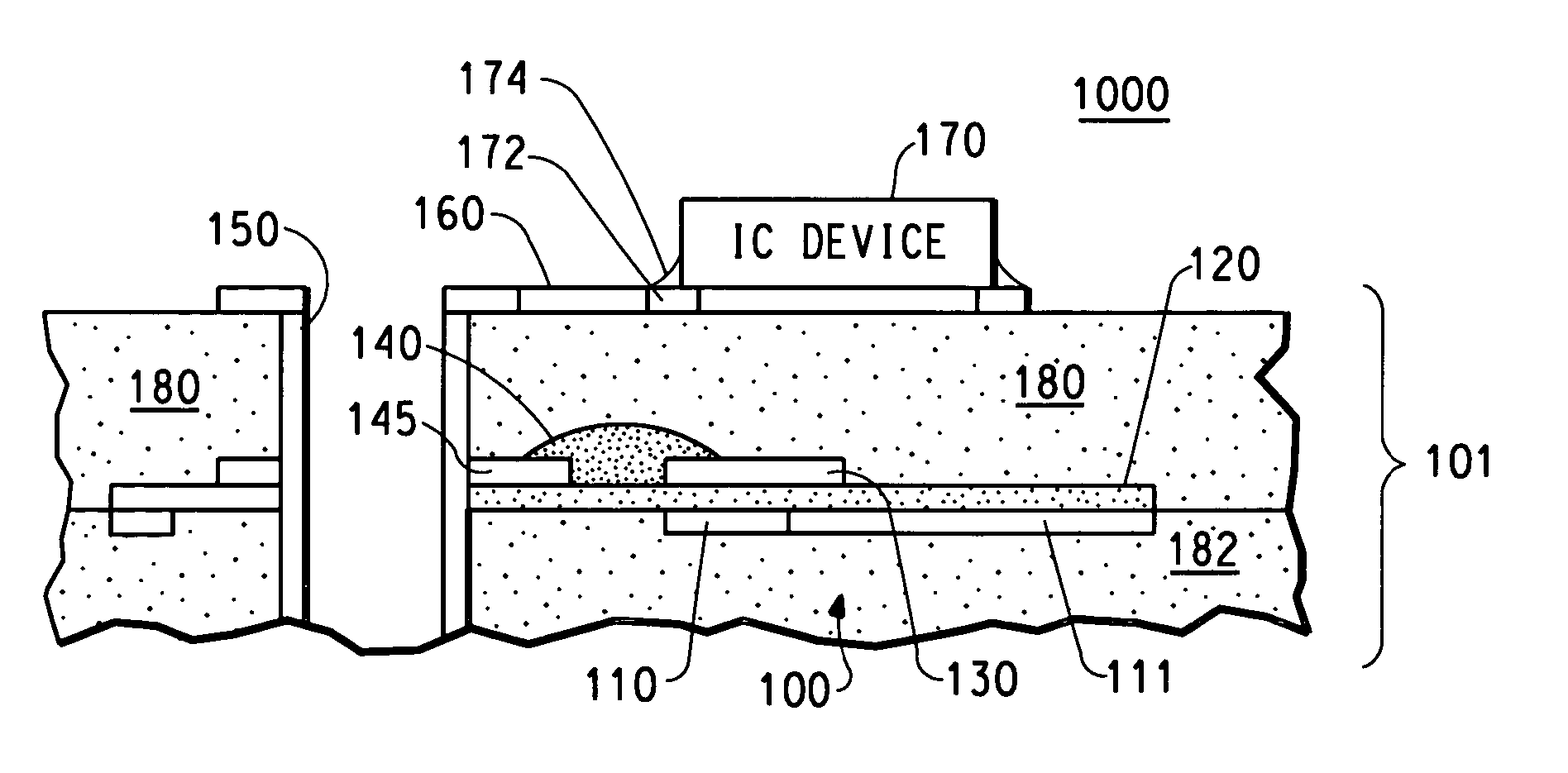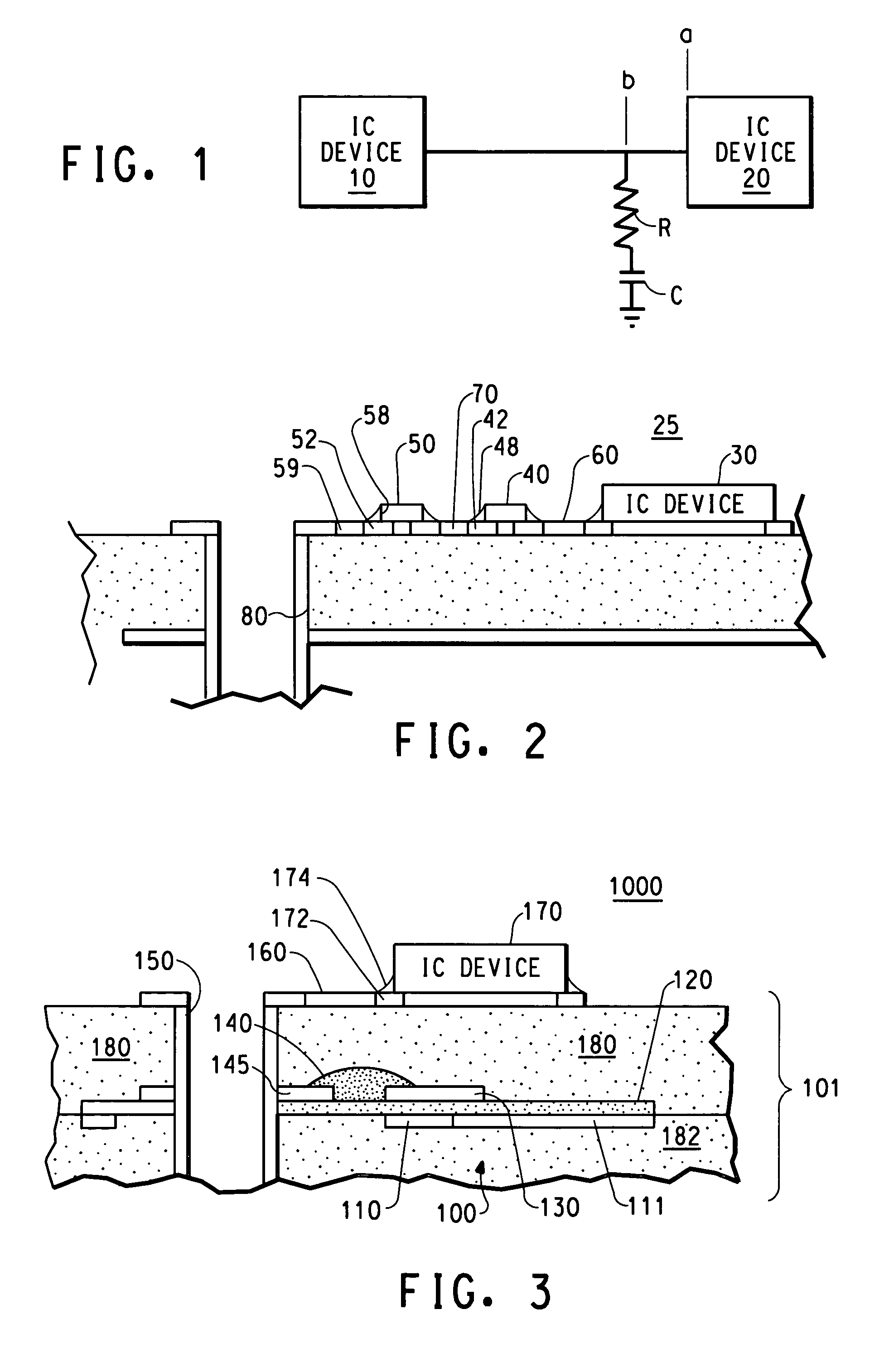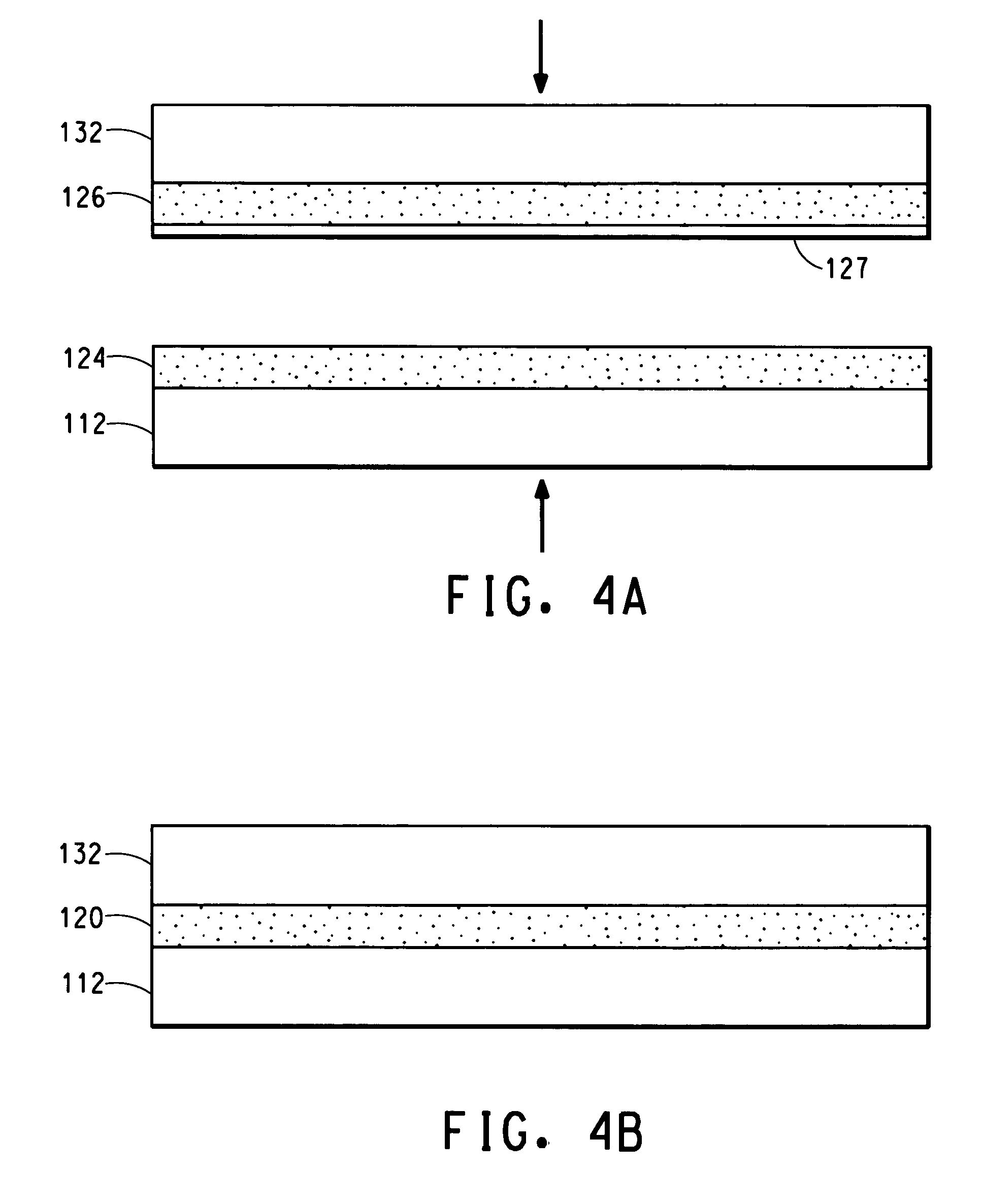Capacitive/resistive devices and printed wiring boards incorporating such devices and methods of making thereof
a technology of resistive devices and printed wiring boards, which is applied in the direction of printed resistor incorporation, printed circuit non-printed electric components association, electrical apparatus construction details, etc., can solve the problems of increasing fabrication costs and reliability reduction of solder joints, so as to reduce the cost and difficulty of creating resistor and capacitor functions, improve reliability, and free valuable real estate
- Summary
- Abstract
- Description
- Claims
- Application Information
AI Technical Summary
Benefits of technology
Problems solved by technology
Method used
Image
Examples
example 2
[0031] This example of the device 100 is discussed with reference to FIG. 3. In this example, a laminate is formed by casting a barium titanate-filled thermoplastic polyimide on one copper foil and laminating a second copper foil onto the surface of the barium titanate-filled thermoplastic polyimide coating. Barium titanate is advantageous as a filler as it is readily available and lead-free.
[0032] Lamination is performed at a suitable temperature and pressure so as to bond the articles together without use of a separate adhesive material. The electrodes 110, 130 are formed from copper foils and the dielectric 120 is a filled polyimide dielectric of 14 micron thickness having a dielectric constant (Dk) of 11 thereby yielding a capacitance density of 4.5 nanoFarads per square inch (Interra™ HK 11 available from DuPont Electronic Technologies).
[0033] The size of the capacitor needed for a transmission line termination as described above is 4.3 square mm, or approximately 2 mm by 2 m...
example 3
[0035] This example of the device 100 is discussed with reference to FIG. 3. In this example, the laminate is made by casting a barium titanate-filled thermoplastic polyimide (available from DuPont Electronic Technologies) on two copper foils and laminating them together at a suitable temperature and pressure to bond them together. A separate adhesive material is not used. The electrodes 110, 130 are formed from the copper foils. The resulting dielectric 120 is a barium titanate-filled, polyimide dielectric of 8 microns thickness having a capacitance density of 6.2 nanoFarads per square inch.
[0036] The size of the capacitor needed for a transmission line termination as described above is 3.1 square mm, or approximately 1.77 mm by 1.77 mm. The deposited resistor can be formed from a screen printed 100 ohm per square polymer thick-film resistor paste (available from DuPont Electronics).
[0037] A preferred size of the resistor for a nominal 60 ohm resistance in this example would be 1...
PUM
| Property | Measurement | Unit |
|---|---|---|
| Dielectric polarization enthalpy | aaaaa | aaaaa |
| Electrical conductor | aaaaa | aaaaa |
| Metallic bond | aaaaa | aaaaa |
Abstract
Description
Claims
Application Information
 Login to View More
Login to View More - R&D
- Intellectual Property
- Life Sciences
- Materials
- Tech Scout
- Unparalleled Data Quality
- Higher Quality Content
- 60% Fewer Hallucinations
Browse by: Latest US Patents, China's latest patents, Technical Efficacy Thesaurus, Application Domain, Technology Topic, Popular Technical Reports.
© 2025 PatSnap. All rights reserved.Legal|Privacy policy|Modern Slavery Act Transparency Statement|Sitemap|About US| Contact US: help@patsnap.com



